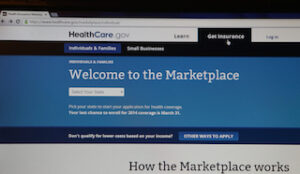A cancer-fighting group is cautioning consumers to be wary of short-term health plans, saying they leave policyholders vulnerable to major medical bills in the event of a variety of serious medical issues.
The Leukemia & Lymphoma Society (LLS) released new research recently which shows the significant financial costs facing consumers treated for five serious conditions while enrolled in short-term health plans: lymphoma, heart attack, lung cancer, diabetes and mental health hospitalizations.
The study, conducted by Milliman, is the latest in LLS’s Cost of Cancer Care initiative, a comprehensive effort to address the extraordinary cost of treating cancer, specifically the direct costs to patients. The findings are timely, as some commercial insurance companies are accelerating promotion of short-term, limited duration (STLD) health plans since the Trump administration increased the length of time patients may be covered under them.
The plans are not required to meet the same minimum standards of coverage as those regulated by the Affordable Care Act (ACA) and therefore put more patients at risk of being exposed to increased costs and inadequate coverage, LLS says.
Key findings
- A patient newly diagnosed with lymphoma while covered by a STLD plan could pay $23,100 to $45,800 in out-of-pocket expenses (including premiums and cost sharing for medical expenses) during the six months following diagnosis.
- In contrast, a patient who is newly diagnosed with lymphoma while enrolled in an ACA-compliant plan could pay $6,300, on average, in out-of-pocket expenses over the same time period.
- A newly diagnosed lung cancer patient risks facing out-of-pocket expenses of more than $100,000 in the six months following diagnosis if the patient is unable to renew the STLD coverage and becomes uninsured.
“The findings of this study confirm what we long suspected—that the design of these plans leaves patients vulnerable to expensive bills,” said Gwen Nichols, MD, LLS chief medical officer. “Short-term plans don’t offer typical health insurance benefits and provide very little protection when a patient faces a serious, unexpected diagnosis. LLS is working at the state and federal levels to protect patients from these dangerous plans. We urge cancer patients and their caregivers to ask questions about whether their treatments are covered by these plans, given their serious shortfalls.”
Addressing the cancer cost burden
LLS initiated its Cost of Cancer Care initiative in 2017, recognizing that patients and families were taking on more out-of-pocket costs for their care and treatments. LLS has engaged stakeholders across the healthcare system—drug makers, pharmacy benefit managers and insurers, healthcare providers, and other patient organizations—and called upon each to do their part to help make meaningful progress in lessening the cost burden for patients.
LLS engaged Milliman to develop a series of research reports examining insurance coverage issues. Previous research revealed the out-of-pocket cost burden associated with cancer treatment for Medicare patients with blood cancer diagnoses, and the financial burden faced by those enrolled in commercial plans. The research helps inform the policy initiatives LLS promotes as it works to protect patients’ access to quality treatment and care.
LLS says short-term plans long on risk
The new Milliman study found that short-term, limited duration (STLD) health plans could leave patients on the hook for tens of thousands of dollars if they face serious health problems.
The STLD plans were previously a niche product, available as a three-month bridge between coverage. With the modifications advanced by the Trump administration, STLD plans are now available for consumers to use for up to 36 months and are often marketed to consumers seeking ACA plans, LLS says.
The report highlights other ways STLD plans differ significantly from ACA plans:
- Approximately 33% of STLD plans Milliman studied provide coverage for prescription drugs, and 42% provide mental health coverage. ACA-compliant insurance must provide both types of coverage.
- STLD plans can refuse to renew the coverage of patients diagnosed with medical conditions after they enroll, exposing consumers to potentially higher out-of-pocket expenses. Patients who are denied renewal may be left uninsured until the next ACA open enrollment period and thus responsible for the undiscounted amount billed by the provider for medical services. Preexisting condition protections guaranteed by the ACA don’t apply to short-term plans.
- More than 1 in 4 STLD plans studied by Milliman had a deductible (the amount patients pay before the plan pays anything) greater than $7,900, which was the maximum annual deductible allowed under ACA-compliant plans in 2019. In many cases, STLD plans provide less than a year of coverage, which means the deductible and maximum out-of-pocket amounts apply only for the duration of the policy.
Market impact
Recent regulations have increased the availability of non-ACA-compliant health plans. LLS says premiums will likely rise for those keeping ACA insurance, as the healthier consumers exit the ACA market.
Notably, states can determine the availability of these plans within their borders. Milliman’s analysis found that in states that allowed the federal expansion of short-term plans, this expansion along with the repeal of the individual mandate penalty contributed to about a 4.3% increase in premiums in 2020.
On the other hand, LLS points out premiums for ACA insurance dropped an average of 1.2% due to regulatory actions in the 12 states that restricted or banned the expansion of short-term plans. This drop was driven by California, where STLD were banned and the re-instatement of the individual mandate penalty led to premium decreases in 2020.
In states that allow the federal expansion of STLD plans to continue, ACA insurance markets could lose up to 6% of their members to coverage that doesn’t meet the ACA’s minimum standards by 2021, according to Milliman’s analysis.
“Restricting short-term plans is a proven step policymakers can take to protect consumers while helping them save on premiums,” Nichols said. “Restricting short-term insurance should be a no-brainer for any lawmaker who wants to do what’s right for patients facing serious disease.”
To view the full study click here.














Far too many consumers only look at the premium costs and take their decision based on that number. "It's only for a short time. It won't happen to me. Why pay twice as much, I'm healthy" They never stop to think what could happen in day to day living, let alone feeling poorly and getting a check up which turns bad. My friend was not feeling well, knew that something wasn't right, and went in for a check-up on a day he had made a dentist appt. He never made the dentist appt because he was diagnosed with a glioblastoma and has been fighting the cancer for over a year. I went for a trail ride on a stupid horse. The horse spooked, the saddle slipped and when I fell I broke 6 ribs and spent a week in a hospital.